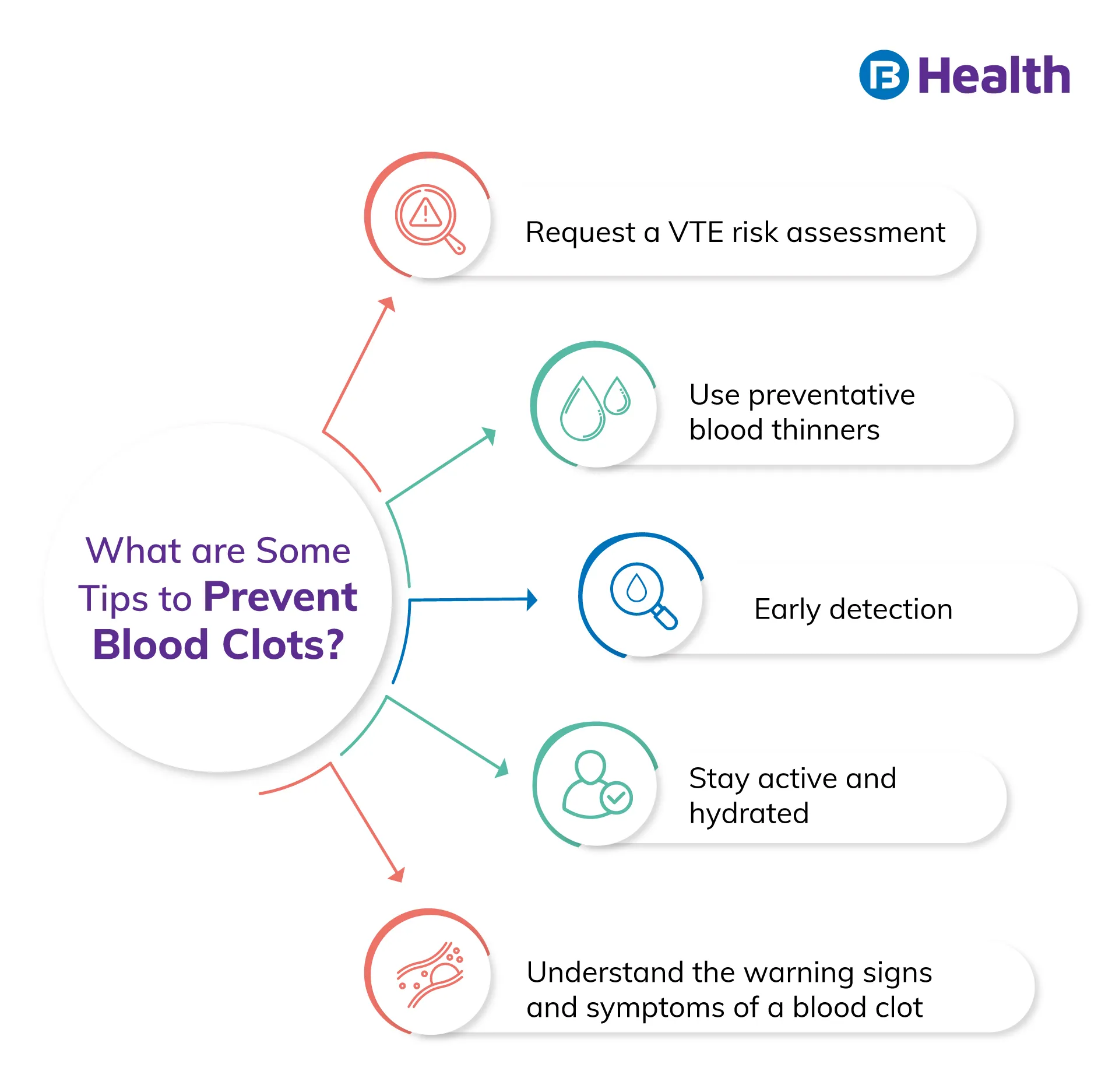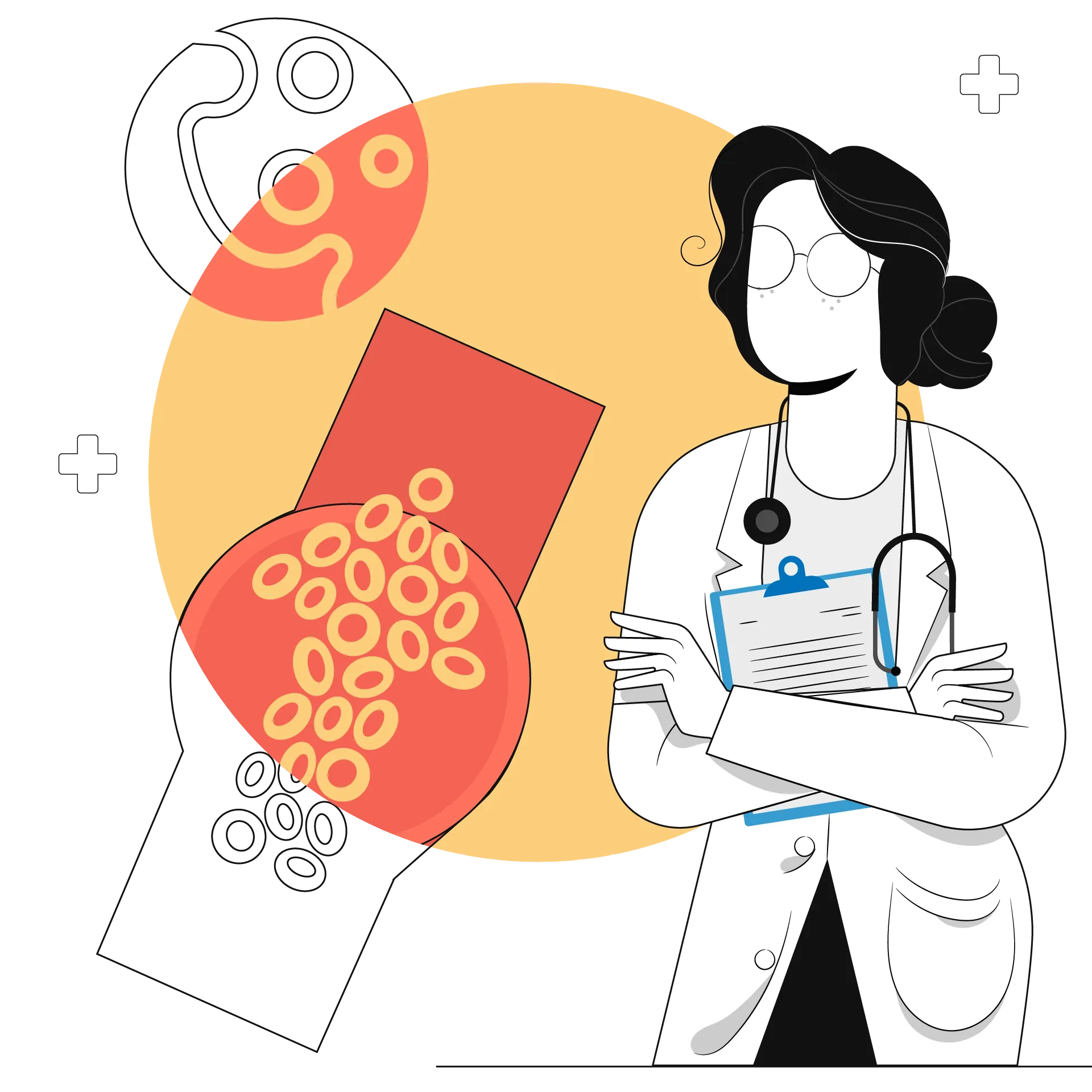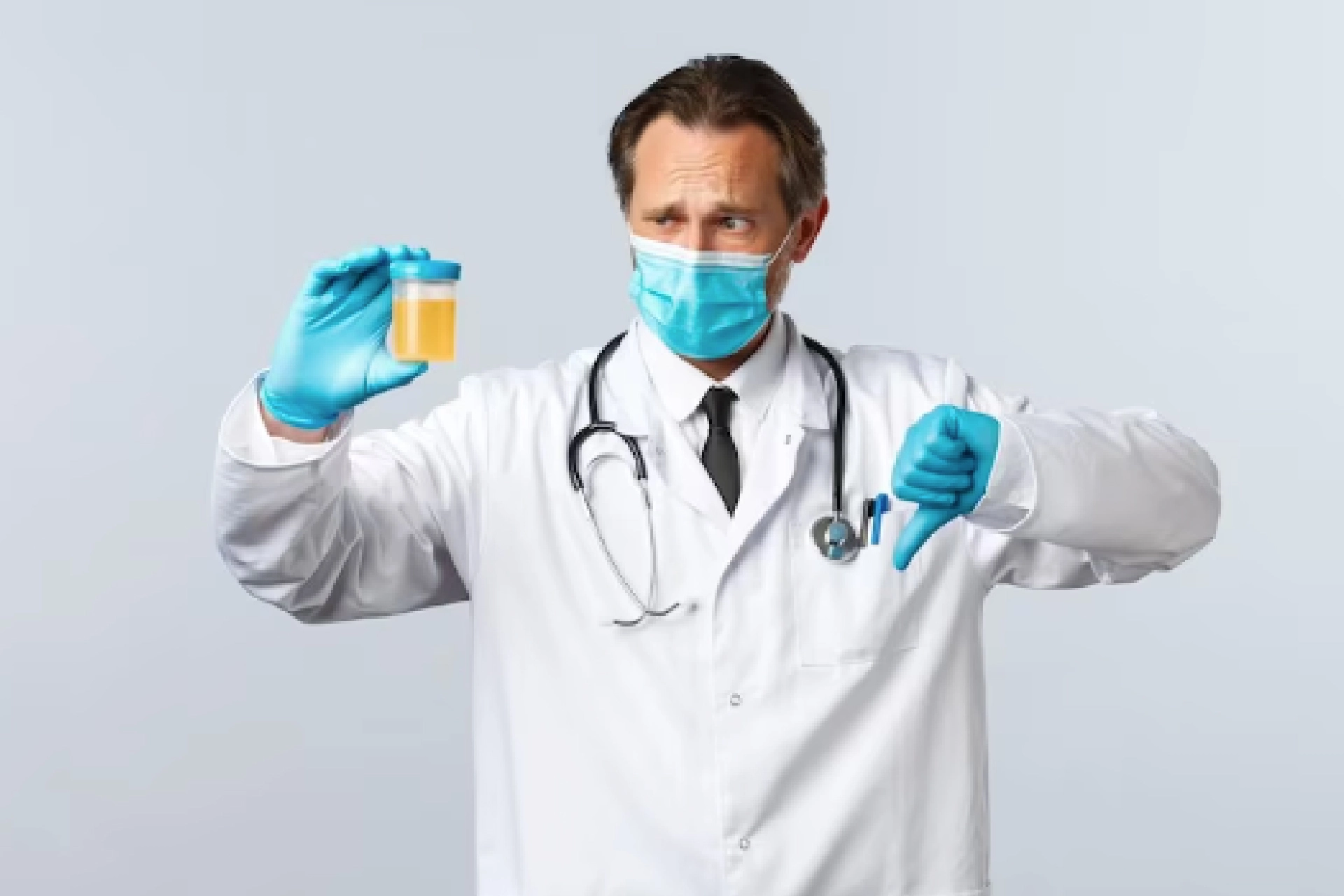General Health | 8 min read
World Thrombosis Day: Theme, Awareness and Prevention
Medically reviewed by
Table of Content
Synopsis
World thrombosis day 2022 aims to encourage people to live healthier lives by making them understand what thrombosis is and its related complications. It aims to spread awareness on how to prevent or, better yet, avoid complications.
Key Takeaways
- A blood clot break off and get stuck in blood circulatory system, often blocking arteries, leading to complications
- Blood clots can be prevented with a healthy lifestyle
- During surgeries, extra care is taken for patients suffering from thrombosis
World Thrombosis Day is celebrated as a step toward increasing awareness of thrombosis. Even though one in every four people worldwide dies from thrombosis-related conditions, it remains one of the most commonly overlooked medical conditions. [1]
Blood clots recently took center stage as research revealed an increased risk of blood clots in hospitalized patients with COVID pneumonia. Furthermore, blood clots were discovered to be rare but severe side effects of certain COVID-19 vaccines.
For this reason, we celebrate World Thrombosis Day to encourage the general public, healthcare practitioners, and policymakers to keep their "Eyes Open to Thrombosis" and work together to raise awareness of thrombosis as a serious and growing global health issue.
Thrombosis
Platelets and plasma work together to stop bleeding and clot formation in an injured area.
You're probably familiar with blood clots on the skin's surface, also known as scabs. When the injured area heals, your body will usually dissolve the blood clot on its own.
In some instances, clots form inside blood vessels without injury. These clots don't dissolve naturally and are a potentially fatal condition. Clots in veins can prevent blood from returning to the heart. In addition, the collection of blood behind the clot can cause pain and swelling. What is thrombosis?
- Thrombosis is the formation of blood clots in the artery called arterial thrombosis or a vein called venous thrombosis, which can be potentially fatal
- Pulmonary embolism or PE is when a blood clot travels through the circulation and lodges in the lungs
- DVT and PE are combined to form venous thromboembolism (VTE), a potentially fatal medical condition
World thrombosis day 2022 theme raises awareness on how clots can break from a DVT and travel to the heart, lungs, or brain, preventing the necessary blood flow to these organs.

Thrombosis Symptoms
DVT symptoms include calf and thigh pain or tenderness, leg, foot, and ankle swelling, redness and noticeable discoloration, and warmth.
Chest pain that worsens with deep breaths, rapid breathing, shortness of breath, rapid heart rate, lightheadedness, and fainting are common symptoms of PE. In addition, hospitalisation, surgery, cancer, prolonged immobility, family history, estrogen-containing medications, and pregnancy or recent birth are all risk factors for Venous Thromboembolism (VTE). Given that up to50%-60% of VTE cases occur during or after hospitalisation, requesting a risk assessment is critical at the time of admission.
Thrombosis, also known as blood clots, can lead to a number of potentially fatal medical conditions, such as heart attack, thromboembolic stroke, and venous thromboembolism (VTE). However, it remains one of the most commonly overlooked medical conditions.
Thrombosis is a major public health issue that many people are unaware of. World thrombosis day 2022 focuses on the larger population. Understanding the risk factors for thrombosis, as well as the signs and symptoms, is information that could save your life.
Types of Thrombosis
- Hospital-associated thrombosis: Hospital-associated clots can happen in the hospital or within 90 days of discharge and account for 60% of all VTE cases and are the leading cause of preventable death due to hospitalisation
- COVID-19-related thrombosis: According to research, COVID-19 increases the risk of clots by making the blood extremely 'sticky'
- Cancer-related thrombosis: One out of five blood clot people are cancer-diagnosed patients. This increased risk is caused by cancer-specific factors such as type, histology, stage of the malignancy, cancer treatment, certain biomarkers, surgery, hospitalisation, infection, and genetic coagulation disorders
- Gender-specific thrombosis: For women, blood clot risk factors include estrogen-based oral contraceptives, hormone replacement therapy tablets, and pregnancy. Women are five times more likely to form a blood clot during pregnancy
If you have survived thrombosis, please share your story with others on World Thrombosis Day 2022 using the hashtag #WorldThrombosisDay.
Blood Clots After Surgery
Coagulation, the formation of blood clots, is your body's normal response in certain situations. For example, if you cut yourself, a blood clot forms in the injured area to stop the bleeding and aid healing. These blood clots are not only beneficial, but they also help prevent excessive blood loss when you are severely injured. However, major surgery can increase your risk of developing dangerous blood clots in areas such as the lungs or brain.
Additional Read: Does Insurance Cover Brain Surgery?Symptoms of a Blood Clot After Surgery
Every type of surgery carries different risk levels. DVT and PE are potential complications you should be aware of. Learn more about thrombosis and discuss the risks with your doctor on World Thrombosis Day.
Clot Location | Symptoms |
| Heart | Chest heaviness or pain, numbness in the arm, upper-body discomfort, sweating, shortness of breath, nausea, lightheadedness |
| Brain | Face, arm, or leg weakness, difficulty speaking or garbled speech, vision problems, severe headache, dizziness |
| Arm or leg | Pain in the limb, tenderness, swelling, and warmth in the limb |
| Lung | Heart attack symptoms include sharp chest pain, shortness of breath, racing heart or rapid breathing, sweating, fever, and coughing up blood. |
| Abdomen | Intense abdominal pain, vomiting, and diarrhoea |
If you suspect you have a blood clot, contact your doctor immediately. Then, if you need surgery, the doctor can review all the risks and recommend the best way to prepare. Surgery Risk Factors
You're more likely to develop DVT after surgery because you're inactive during and after the procedure. Muscle movement is required to keep blood flowing to your heart. This inactivity causes blood to pool in the lower parts of your body, particularly the legs and hips. Reduced muscle movement can result in a clot. In addition, you are more likely to develop a blood clot if your blood is not allowed to flow freely and mix with anticoagulants.
In addition to inactivity, surgery increases your risk of clots. Surgery can cause foreign matter, such as collagen, tissue debris, and fat, to be released into your bloodstream. When your blood comes into contact with something unfamiliar, it thickens. This release has the potential to cause blood clotting.
Furthermore, your body may release naturally occurring substances that promote blood clotting as a response to the movement or removal of soft tissues during surgery.
Additional Read: Yoga for Varicose Veins
Preventing Blood Clots After Surgery
World Thrombosis Day 2022 aims to increase public and health professional awareness of the prevalence and risks of thrombosis and take action. Educational programs offered throughout the year can accomplish this. The several steps you can take to avoid blood clots after surgery are:
- The most crucial thing patients can do is talk to their doctor about their medical history. They should notify their doctor if they have a history of blood clots or are currently taking drugs or medications
- Some blood disorders can cause clotting issues and complications after surgery. Aspirin can also help with blood clots, so beginning an aspirin regimen may be beneficial
- Warfarin (Coumadin) or heparin, both common blood thinners, may be prescribed by the doctor. Blood thinners, also known as anticoagulants, are medications used to treat blood clotting. They can also prevent existing clots from growing larger
- The doctor will take all the necessary precautions to stop blood clots from forming before surgery. Following surgery, they will elevate the patient's arms and legs to help increase circulation
- If the patient is at a high risk of forming clots, their doctor may use serial duplex ultrasound scans to observe and monitor them. If they have an increased risk of pulmonary embolism or deep vein thrombosis, they may be given thrombolytics, which dissolve clots. These drugs are injected directly into your bloodstream
- Changes in lifestyle before surgery may also be beneficial. These could include quitting smoking or starting an exercise regimen.
- Once the doctor has given the patient their permission, they should make sure to move around as much as possible after surgery. Moving around reduces the likelihood of developing a blood clot. The doctor may also recommend compression stockings. These can aid in the prevention of leg swelling
Tips For Prevention of Blood Clots
Every year, approximately 10 million cases of hospital associated VTE occur worldwide. [2] On World Thrombosis Day, people worldwide unite in the desire to improve their health. With early detection and preventative blood thinners, this condition is usually preventable.
- Understand the warning signs and symptoms of a blood clot: Look for unexplained leg pain, tenderness, redness and swelling, chest pain, shortness of breath, rapid breathing, and occasional blood coughing
- Request a VTE risk assessment: All individuals, particularly those who are hospitalised, should request a VTE risk assessment. It is a questionnaire that gathers medical information to determine a patient's potential risk factors that might lead to blood clots
- Stay active and hydrated: If you're going to be sitting for a long time, set the alarm for five minutes before each hour and use that time to get up, walk around, and stretch. Long periods of immobility can increase the risk of blood clots. Drink plenty of water to avoid dehydration, which can cause blood to thicken and clot
Concerning World Thrombosis Day 2022
Every year, October 13 observes World Thrombosis Day (WTD) raise global awareness of thrombosis and reduce avoidable deaths and disabilities caused by the condition. Rudolf Virchow, a German physician, pathologist, biologist, and anthropologist who pioneered the pathophysiology of thrombosis, was also born on this day.
The mission of World Thrombosis Day supports the World Health Assembly's global goal of reducing noncommunicable disease-related premature deaths. The mission also aims at contributing to the World Health Organization's global action plan for noncommunicable disease prevention and control between 2013 and 2020.
World Thrombosis Day 2022 is observed in conjunction with World Egg Day on October 14 and World Food Day on October 16 to recognize and celebrate the versatile, affordable, delicious, and nutritious food items (eggs) that provide sustainable nutrition throughout the world.
It is also observed in conjunction with World Suicide Prevention Day on September 10 and World Sight Day on October 13 every year.
World thrombosis day 2022 theme is to raise awareness about healthy living for the body, mind, and soul while appreciating connection and goodwill throughout the world.
World Thrombosis Day 2022 encourages people to live healthier lives. You can visit Bajaj Finserv Health to get more valuable insights into various global health concerns.
References
- https://www.worldthrombosisday.org/news/post/know-thrombosis-recognizing-signs-symptoms-dangerous-blood-clots/
- https://www.ncbi.nlm.nih.gov/pmc/articles/PMC6591776/
Disclaimer
Please note that this article is solely meant for informational purposes and Bajaj Finserv Health Limited (“BFHL”) does not shoulder any responsibility of the views/advice/information expressed/given by the writer/reviewer/originator. This article should not be considered as a substitute for any medical advice, diagnosis or treatment. Always consult with your trusted physician/qualified healthcare professional to evaluate your medical condition. The above article has been reviewed by a qualified doctor and BFHL is not responsible for any damages for any information or services provided by any third party.





